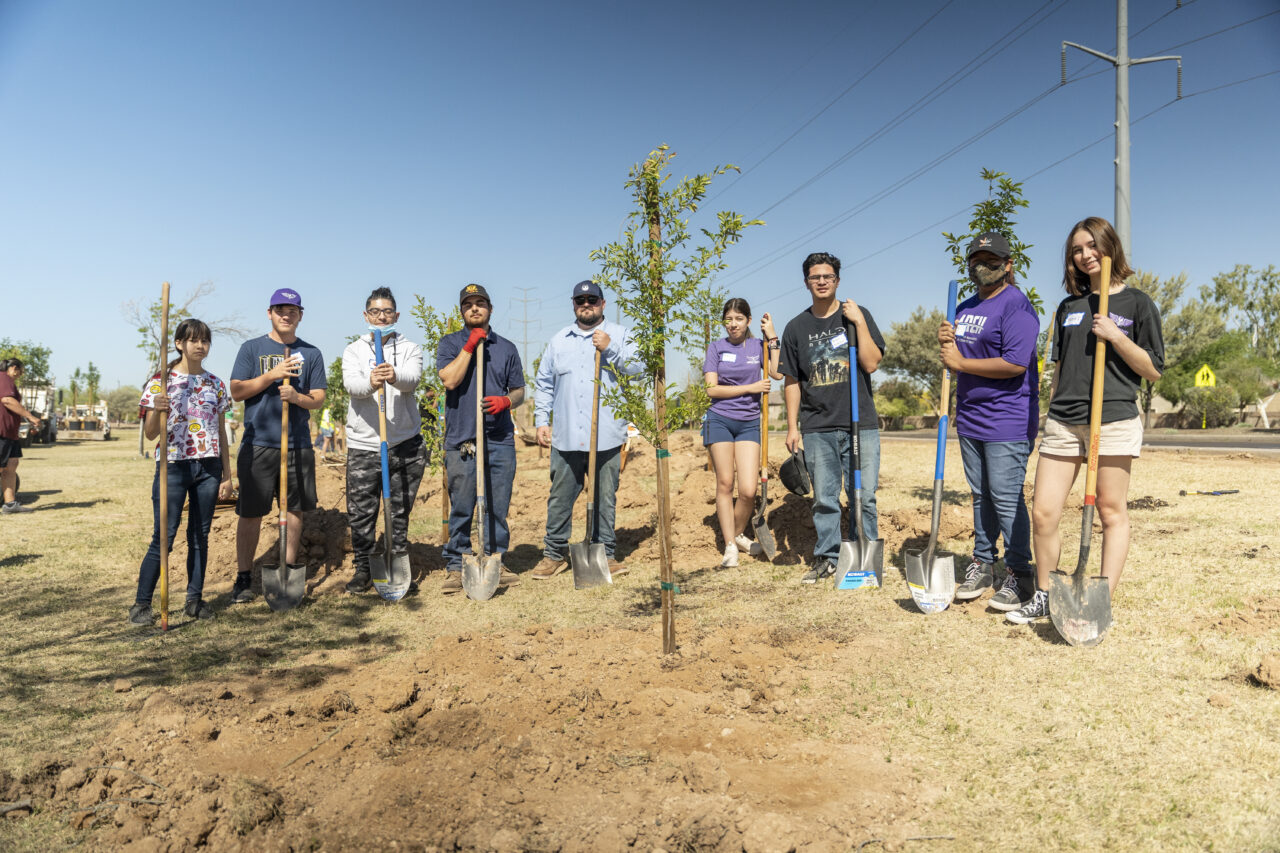Thirty-one consecutive days in sweltering heat above 110o Fahrenheit; 17 straight days above an oppressive 115o F. Heat so relentless that it did not dip below 90o F for 16 days. And, a record-breaking “low” of 97o F.
There are few places in the United States with a greater need for the natural cooling and air pollution reduction benefits of trees than Phoenix and the desert Southwest. As this summer’s unprecedented temperatures revealed, the threat from extreme heat is dire. But, even more, American Forests’ Tree Equity Score shows that neighborhoods with more than 80% people of color have on average 45% less tree canopy than predominantly white communities, and the lowest-income neighborhoods have 36% less tree canopy than high-income areas. The people most in need of the lifesaving benefits trees can offer tend to have the fewest number of them. This is an urgent, life-and-death crisis for many people living in America’s fifth largest city.
And yet, it was exactly the urgent nature of this problem that compelled American Forests to help launch and lead the Phoenix Metro Urban Forestry Roundtable in 2019, alongside the City of Phoenix and the Arizona Sustainability Alliance. American Forests’ foremost concern was with the way inequities in tree canopy contribute to other social, economic and health inequities. But American Forests also recognized that if it could improve Tree Equity in Phoenix and Maricopa County, there would be even more reason to believe in the same success in every other region of the country.
Advancing Tree Equity at a national scale and meeting American Forests’ goals of advancing Tree Equity in at least 100 cities by 2030, forms the basis of our local-to-national program model. Our approach to place-based partnerships, like in Phoenix, flips several existing urban forestry management paradigms on their head.

Photo Credit: Michael Jennings / American Forests
That is, Tree Equity is, first and foremost, about people. Municipalities typically treat trees as liabilities to manage or luxuries that can hardly be afforded. Tree Equity invites cities to see trees as critical infrastructure — similar to streets and water lines — and view the natural cooling and air quality benefits trees provide as essential to the people and neighborhoods which they serve. By inviting everyone with an interest or stake in improved tree canopy to participate in partnerships like the Roundtable, American Forests also attracts more creative problem solving, resources and capacity to address the problem. There are people from more than 60 different municipalities, nonprofits and corporations, as well as both of Arizona’s largest universities, participating in the Phoenix Metro Urban Forestry Roundtable.
Roundtable members are simultaneously working on all aspects of Tree Equity — from identifying and increasing the supply of native and climate-adapted trees for planting, to supporting increased business and job training opportunities, even to studying ways to more efficiently water trees.
The Arizona State University Walton Sustainability Solutions Services program recently received $5 million in federal funding to develop an urban forestry job accelerator program, as part of the $1.5 billion allocation for urban and community forestry in the 2022 Inflation Reduction Act (IRA). The cities of Phoenix, Peoria, Mesa and Chandler also received funding awards from the IRA to support their Tree Equity contributions to the Urban Forestry Roundtable. Arizona University is also contributing to the Roundtable through university extension outreach programs to homeowner associations, providing training and technical assistance on improving tree canopy in privately managed neighborhood associations, where more than 50% of the county’s population lives.
Beyond leading with equity, centering people and encouraging cross-jurisdictional, interdisciplinary collaboration, American Forests’ Tree Equity Score provides relevant, verifiable data about the nature and scope of the need throughout Phoenix and Maricopa County. In Phoenix, just shy of 1 million trees are needed to achieve a Tree Equity Score of 100; throughout all of Maricopa County, the number is just under 3 million trees. Achieving Tree Equity throughout all of Maricopa County would result in sequestering 65 million tons of carbon each year — the equivalent of removing 12.7 million gas-powered cars from the road. But, perhaps even more importantly for a county facing such critical heat threats, ground-level temperatures could be as much as 20o-45o F cooler directly under trees and 10o F cooler on a well-canopied block. The Roundtable is getting ready to release a Tree Equity Score Analyzer tool for all of Maricopa County, that any resident or government official can use to analyze low-equity neighborhoods, customize tree planting solutions and immediately know what benefits the additional trees will have produce on public health and climate impacts.
By focusing on people, working in close partnership with a diverse group of stakeholders and grounding its work in data and science, American Forests is proving that it can achieve significant climate and health outcomes in the most challenging locations in the country.